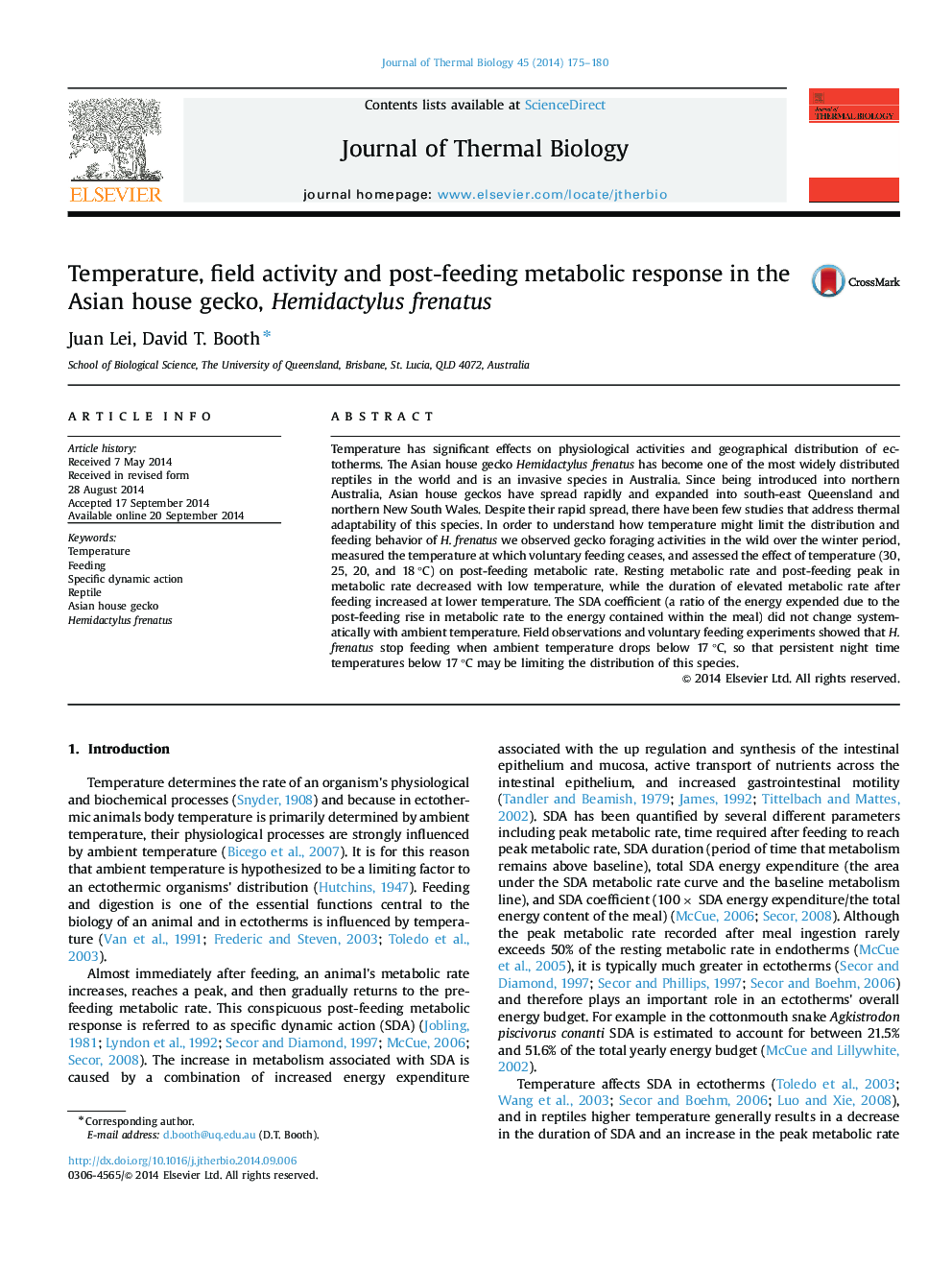| کد مقاله | کد نشریه | سال انتشار | مقاله انگلیسی | نسخه تمام متن |
|---|---|---|---|---|
| 2842895 | 1571100 | 2014 | 6 صفحه PDF | دانلود رایگان |

• Asian house geckos cease outdoor foraging between 15–17 °C.
• Asian house geckos cease feeding at temperatures below 17 °C in the laboratory.
• Post-feeding metabolism decreases in magnitude but is longer at lower temperatures.
• Efficiency of feeding did not vary systematically with temperature.
• Low temperature limits on the ability to digest food may limit distribution.
Temperature has significant effects on physiological activities and geographical distribution of ectotherms. The Asian house gecko Hemidactylus frenatus has become one of the most widely distributed reptiles in the world and is an invasive species in Australia. Since being introduced into northern Australia, Asian house geckos have spread rapidly and expanded into south-east Queensland and northern New South Wales. Despite their rapid spread, there have been few studies that address thermal adaptability of this species. In order to understand how temperature might limit the distribution and feeding behavior of H. frenatus we observed gecko foraging activities in the wild over the winter period, measured the temperature at which voluntary feeding ceases, and assessed the effect of temperature (30, 25, 20, and 18 °C) on post-feeding metabolic rate. Resting metabolic rate and post-feeding peak in metabolic rate decreased with low temperature, while the duration of elevated metabolic rate after feeding increased at lower temperature. The SDA coefficient (a ratio of the energy expended due to the post-feeding rise in metabolic rate to the energy contained within the meal) did not change systematically with ambient temperature. Field observations and voluntary feeding experiments showed that H. frenatus stop feeding when ambient temperature drops below 17 °C, so that persistent night time temperatures below 17 °C may be limiting the distribution of this species.
Journal: Journal of Thermal Biology - Volume 45, October 2014, Pages 175–180